PETER ASHWORTH
talks to Michelle Olley
for Phacemag
If you’re a lover of groundbreaking pop music, then it’s odds-on you already own some Peter Ashworth art, hiding its brilliance somewhere in your record collection. His early music, fashion and portrait photography captured the vanguard of the post-punk, new romantic, gender-fluid (back in the day when they called in androgyny), glamour-woke, street-honed scenes of the 1980s.
These are images that pack a visual punch - a testament to the fiery spirit and agency of both subject and artist. Trailblazers like Soft Cell, Eurythmics, The Associates, Blancmange, TheThe, Frankie Goes to Hollywood, Mari Wilson even immortalised him in her hit song Just What I Always Wanted.
While he continues to work in fashion and music, as well as the exhaustive task of creating/curating a digital archive from his pre-digital images, it’s quite the surprise to us that mavericks is Peter’s first ever solo exhibition. The show at The Gallery in Liverpool, running until July 8th - features work that is described in the literature as ‘reflecting the pop aesthetic of the 1980s’, though not everything on show is from that time - 00s electroclash and east-meets-west pop pioneer, Bishi, and 90s band Spaced are also here. Mavericks is curated by James Lawler and Martin Green - aka Duovision - and is the second in their 2018 series for The Gallery: ‘Perpetual Provocateurs’, celebrating a generation of artists that are fearless, confrontational, creative, outsiders, rebellious and ageless’.
How did the mavericks theme for your new exhibition come about?
The idea for the “mavericks” name, initially came from Martin Green of division_arts - he suggested “Maverick”. I reacted to that by suggesting that we should lose the upper case M and add an “s” so that it referred as much to the subjects of the photographs, as to myself, and I now really LOVE the title, and want to keep using it… It was only after this that I discovered that the three shows/artists the gallery are putting on this year are billed as The Perpetual Provocateurs Season - something that surprised me, but which I have, again, come to really like...
Is it a coincidence that so many of your 'mavericks' are from Liverpool?
Yes and no. The guys wanted as many Liverpool names to be included in the show as possible, and, I must admit, I was not always sure where the artists came from, because I met them in London (rather than travel to where they lived), but Liverpool was exporting some of the best musicians in the country in the 80’s and so it was easy to include a large proportion of Liverpudlians (I reckon about 50% of the show).
Are there any bands you've shot recently that struck you as mavericks/in the same vein as some of the 80s pioneers in your show?
i think most people I have shot in my life have been mavericks, certainly to some degree, and it would seem on reflection that I’ve always been attracted to those on the edge of life, who want to do things a different way, and hopefully succeed in their chosen style. It would seem that that’s been recognised in the work I get offered too…
Who was the easiest to shoot and who was the most challenging of the mavericks you've chosen?
‘Those who were interested in being photographed’ is the simplest answer to that, and especially those who knew how to work their image. So EASIEST - Annie Lennox for The Face magazine shoot. We produced so many different shots, all of which were amazing, and it happened so naturally. MOST DIFFICULT - Associates. The first attempt to shoot the Sulk sleeve had to be cancelled after I had set the shot up because Billy McKenzie was on a week long bender and refused to leave his flat. When we tried again two weeks later it went really well, but that was the first and last time that I had to reschedule a shoot because the artist had not turned up.
Do you still use the same printers? I remember Brian Dowling's BDI were the gods of high end photography back in the 80s and 90s...
I am pleased to say that Brian Dowling printed this exhibition. I have loved Brian’s abilities for many, many years and he has loved my work, so it was a natural fit… and it was fun working on the images.
Has the move from print to digital changed your craft/method much?
The pictures are photographic prints made from digital files, which sounds counterintuitive but is the way the industry is going. Photographic prints for the show are on the best paper with a 99 year life, from files that I spent up to a week on (and I really mean I spent up to a week on each image), digitising from the original film to create what I call my 2018 remixes.
How's the digital archiving going? Do you still have all the original prints and contact sheets?
The main reason I’ve not had an exhibition (or a book) before is the discovery, a few decades ago, that the record companies had been throwing away my work - not returning it to me for safe storage, but actually throwing the film away in rubbish skips. I was so thoroughly depressed by learning of this destruction of what i still see as my photography that I then spent the next 20 years trying to find my own work, generally without any success whatsoever. So some of these images have been made from clips tests (where you cut off a proportion of the film to test the exposure, and if it is light or dark you change the process for the rest of the shoot) and a very few outtakes i took before sending the film to the client (usually the day after the shoot).
i am still very angry about the wanton destruction of not only my work, but of a history I am deeply committed to and concerned with, and one day I would like to create a company to change copyright law and what clients are allowed to do with commissioned art… but that is for another time...
Going back to your question about how the archiving is going, I’ve discovered that I actually enjoy the process, even though it is very time consuming to give life back to old images that might have otherwise not seen the light of day. I am now making the images as good as I had intended when i did the shoot… so there is minimal retouching, but the colours are richer, and more to my taste than they might have been in the original film, which is why i am calling these 2018 remixes
Is there another maverick out there that you'd still like to shoot?
Hmmm, no one the comes to mind, ask me tomorrow :)
What is the best thing - and worst - about photography?
Best - I can create almost anything
Worst - the digitisation of photography, which means it is now just another profession that has been trashed by making the professional almost irrelevant, as a consequence of making the tools idiot proof.
Are the prints in the exhibition for sale?
For the first time - yes - my photographs are for sale. All the images in the show are for sale, only at one size (for the moment at least)… the image area is 45cm square on 50 x 60cm paper (18” image on 20 x 24” paper)
What's your next project?
Stephen Jones’ newest collection, I believe, though there is always more digitising of my archive. I have plans for a book, but at this rate that will take another 5 years before I have 150-200 images for it…
Peter Ashworth’s mavericks is currently at The Gallery Liverpool until July 8th. There are hopes to tour it - along with the other Perpetual Provocateurs, if the right venue partners can be found - so watch this space!
The Gallery, 21 Stanhope Street Liverpool L8 5RE
www.thegalleryliverpool.com
[email protected]
@GalleryLpool
Below are just a few of Peter's Iconic photographs
Michelle Olley
Eurythmics - Touch LP sleeve image of Annie Lennox
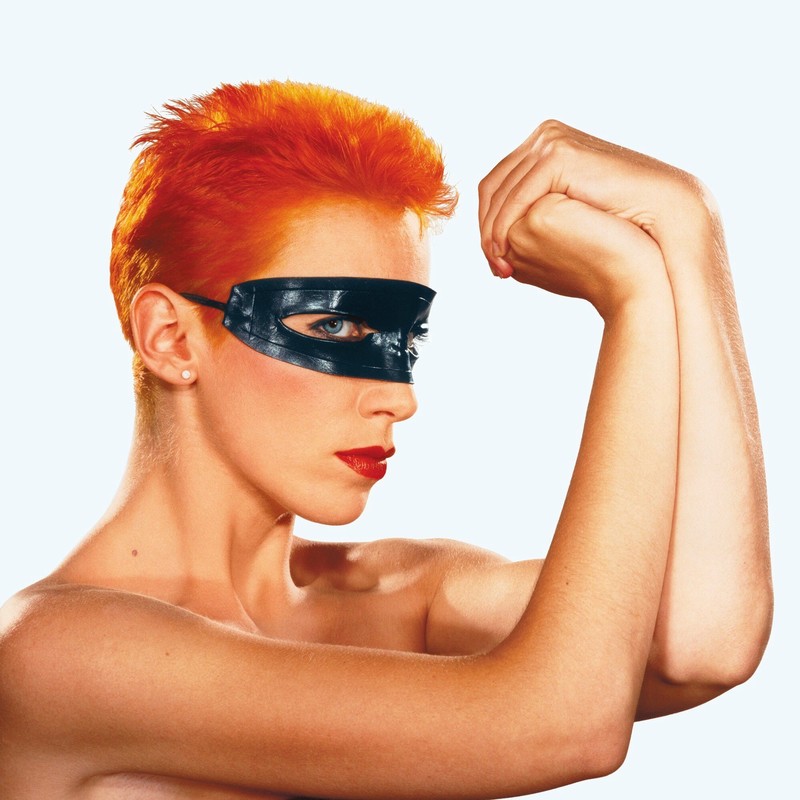
Annie Lennox, is wearing a mask, and making a variation on the strongman pose. This is a very simple image of contradiction - vulnerability and power. Annie's continual use of costume and attitude throughout her career in a search for the alternative persona, created intrigue and mystery around her that remains to this day.\par
Shot on the 1st September 1983, at Bagley's Warehouse, initially for The Face magazine. This image appeared on the cover of issue 42, in October of 1983, when the background was replaced with pure white, and for the cover of the Eurythmics next album, Touch, which was released in November of that year.
Shot on EPR120 transparency film, using a 150mm Hasselblad lens.
Visage 1 LP sleeve image
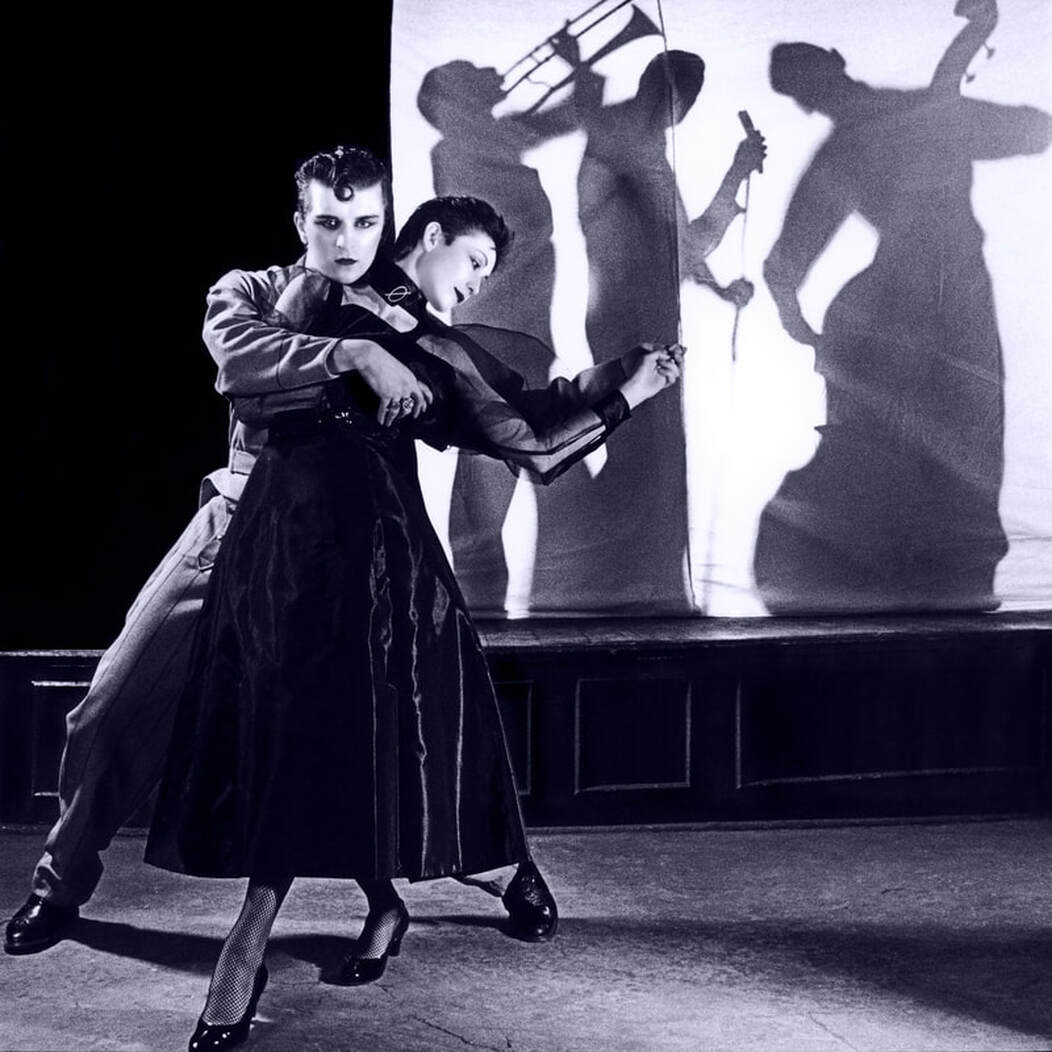
Steve Strange dances with Vivienne Lynn in front of a silhouetted 4 piece jazz band. It is the 18th April 1980, and this is the Blitz Club, London. The two dancers wear the latest PX clothing. Steve worked there. The band behind the curtain are, from left, Stephen Jones, Darryl Humphries, Cerith Wyn Evans. Referencing Brassai's photographs of the demi-monde in 1920s Paris, it is shot in grainy b/w and moodily lit.
Shot, on 18th April 1980, on TX.135.36 film, using a nikon. This digital version was made from a scan of the original b/w negative film, on 13th February 2015.
TheThe - Uncertain Smile
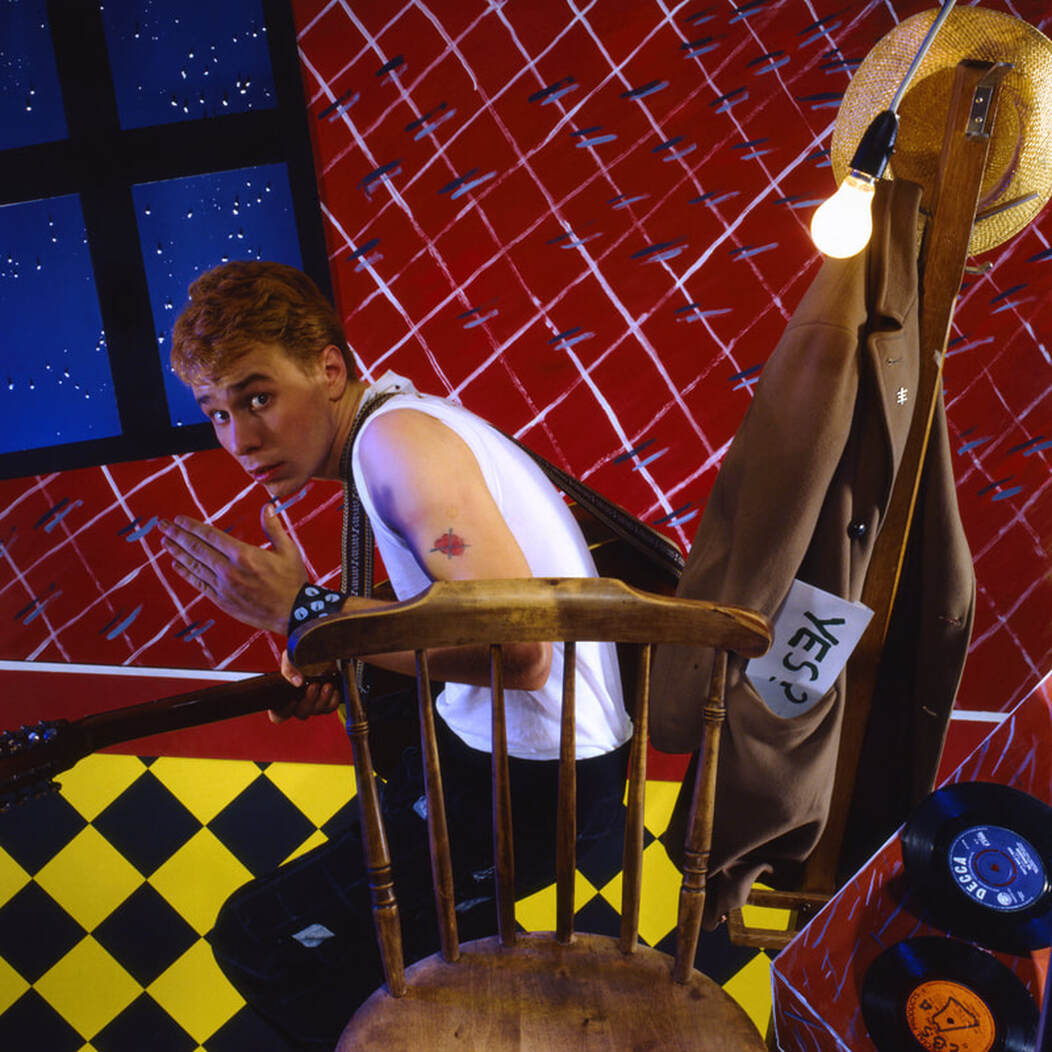
Matt Johnson, in an Andy Dog set (red wall), a life-size reproduction of his painted sleeve for Matt's Uncertain Smile single. Andy Dog was Matt's older brother, who did all the initial TheThe record sleeves.
The set was continually changed throughout the shoot, with little props coming in or being removed. There was a second set with a white wall. i have made a series of 4 images from this shoot.
Shot, on 15th August 1982, on EPR.120 film, using a Hasselblad with a 80mm lens. This digital version was made from a scan of the original colour transparency, on 12th March 2018.
Julian Cope - St.Julian LP session
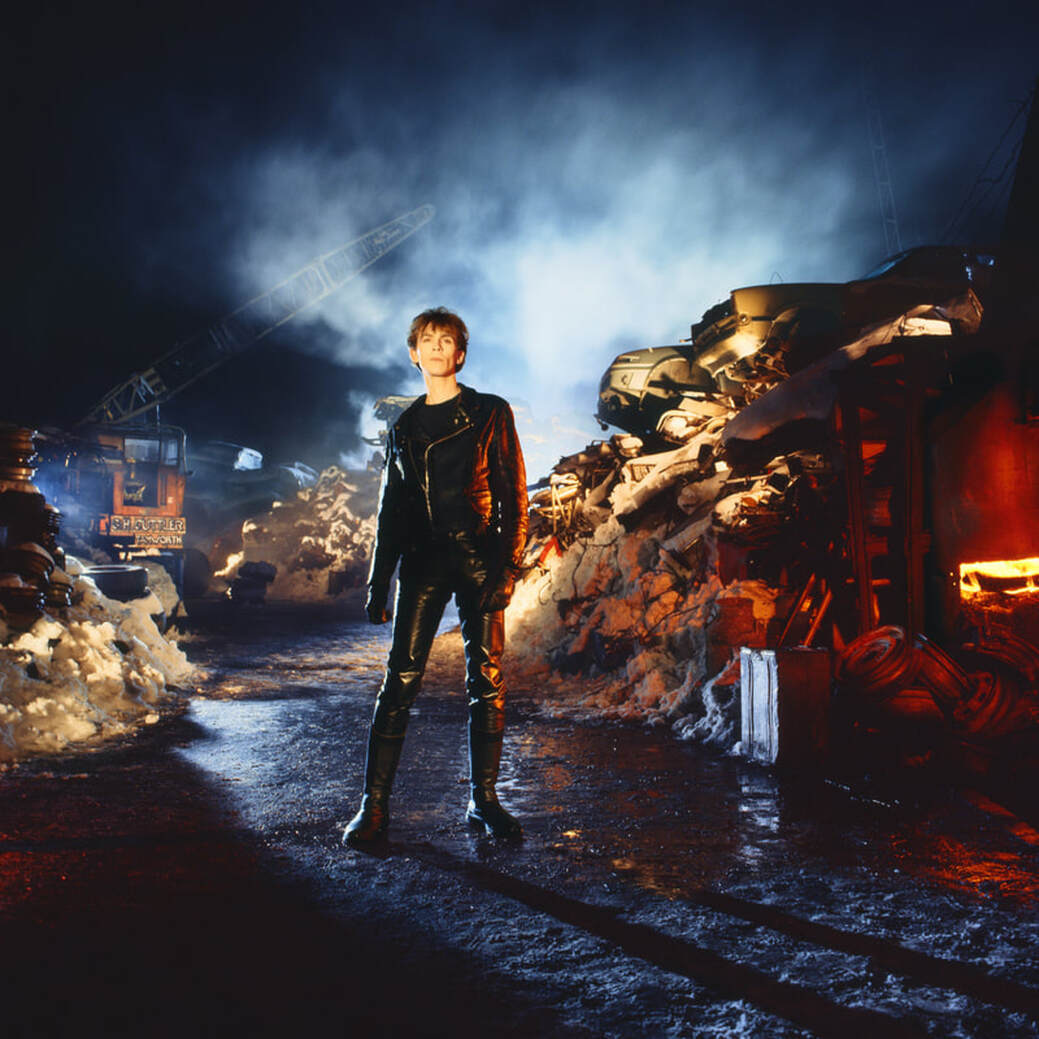
Julian Cope, wearing full biker leathers, stands in the middle of a snow-covered Tamworth scrap yard, on the edge of the town he grew up in.
The pose for the album cover was standing with his arms outstretched, as if being crucified. This shot is a more straightforward look into camera.
The slightly clenched leather gloved hands and the warm glow of the furnace, let alone the snow covered stacks of cars that surround him, hint at the coldness of the night. It was freezing. One of the coldest nights of the year. It took many hours for me and Bruno Tilley, the art director, to light the entire space with heavy duty parcan lights running from a generator truck just out of sight.
Shot, on 11th December 1986, on EPR120 film, using a Hasselblad with a 60mm lens. This digital version was made from a scan of the original colour transparency, on the 6th February 2015.
John Lydon - PIL
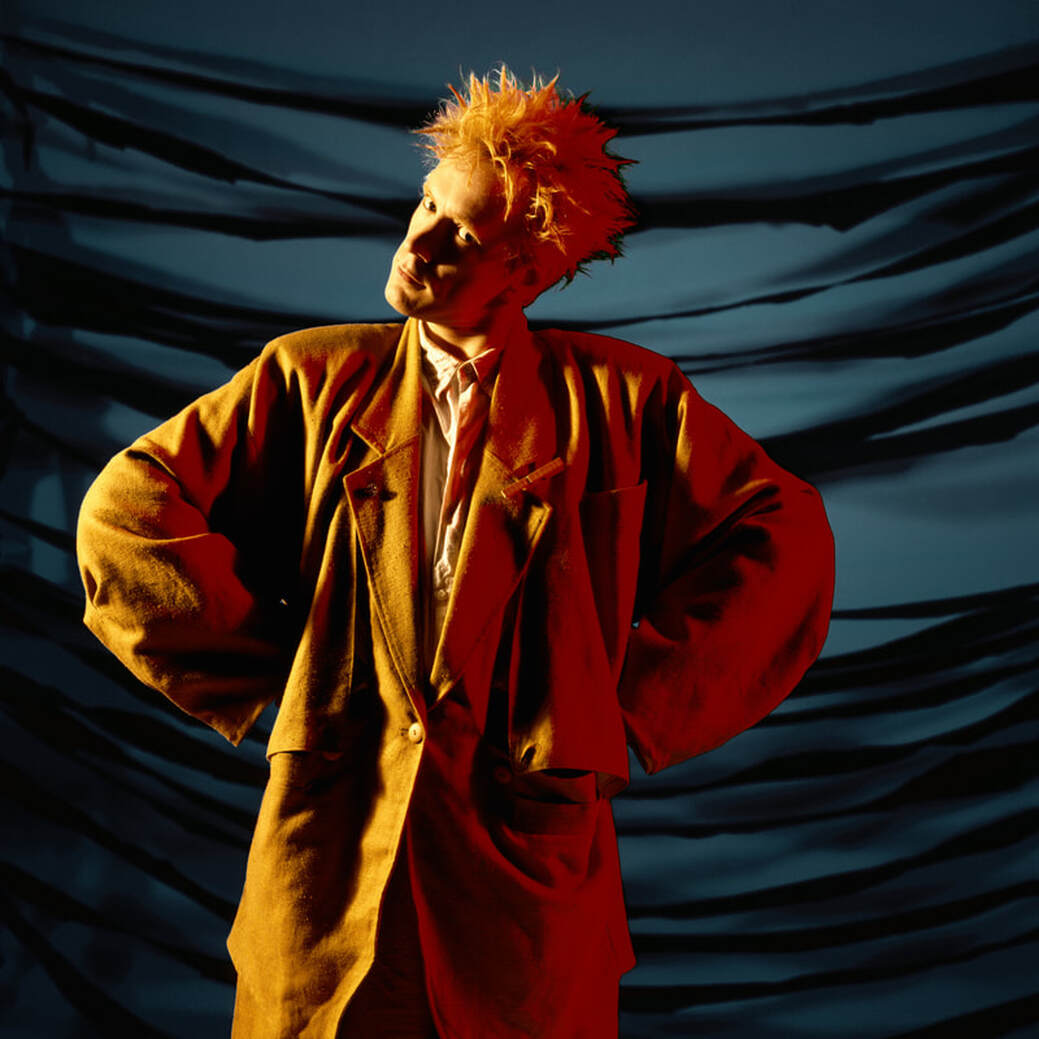
John Lydon, hands on hips, gives a deep stare into the camera.
His head is tilted to one side and there is a sparkle of amusement in his eyes. The clash of colours and the off-centred framing add an edginess. The oversized, crumpled suit mixes the message by adding a softness.
Shot, on 28th July 1987, on EPR120 film, using a Hasselblad with a 150mm lens. This digital version was made from a scan of the original colour transparency, made on the 4th April 2018. This image has then been digitally processed, to enhance the depth and palette, by inverting the background colours.
Frankie Goes To Hollywood - Welcome To The Pleasuredome LP image
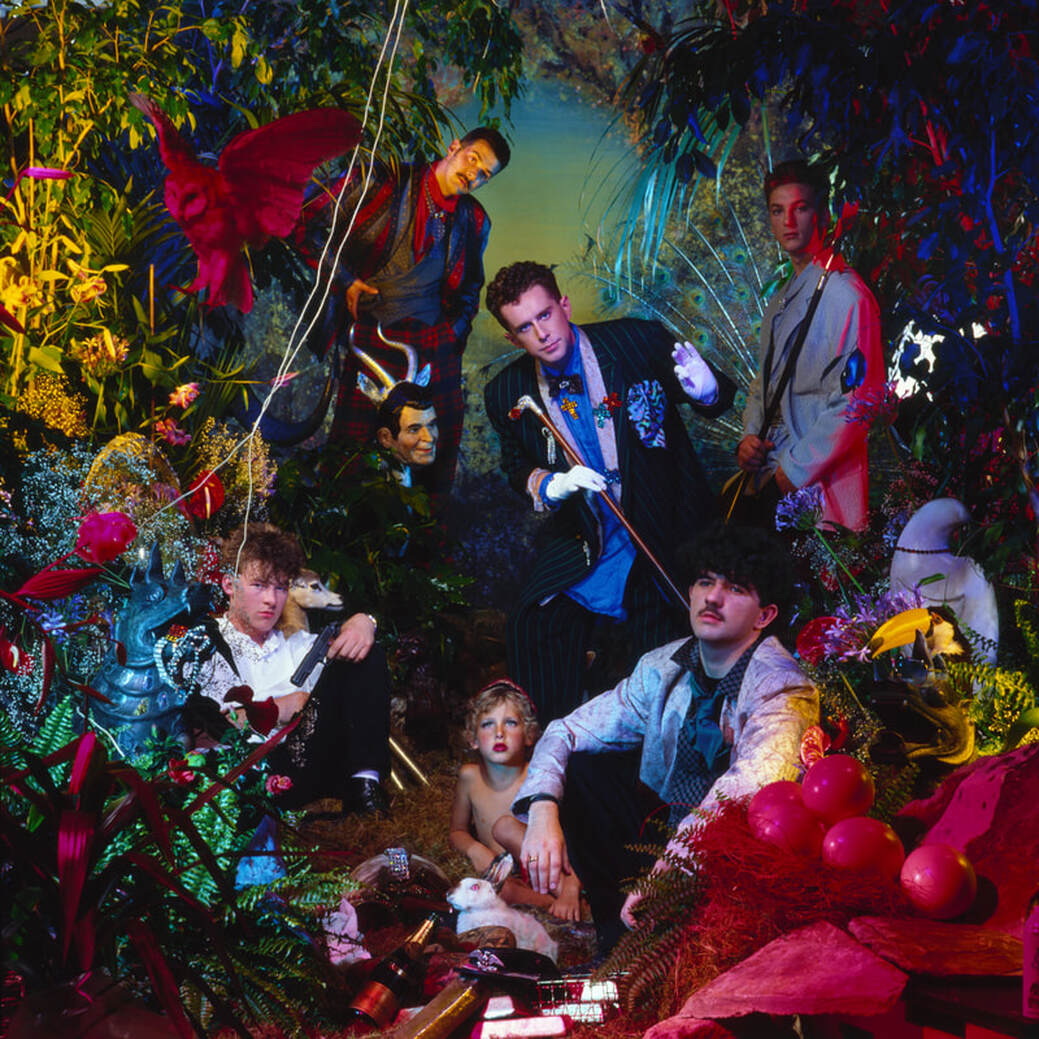
FGTH within a jungle of desires (both good and bad). Concept by Paul Morley.
Shot 1st August 1984, at Bagleys Warehouse, on a Hasselblad with a 150mm lens. This digitised version was created from a scan of the original colour transparency, on 24th January 2015, for the permanent collection of the National Portrait Gallery.
Associates - Sulk LP sleeve\par
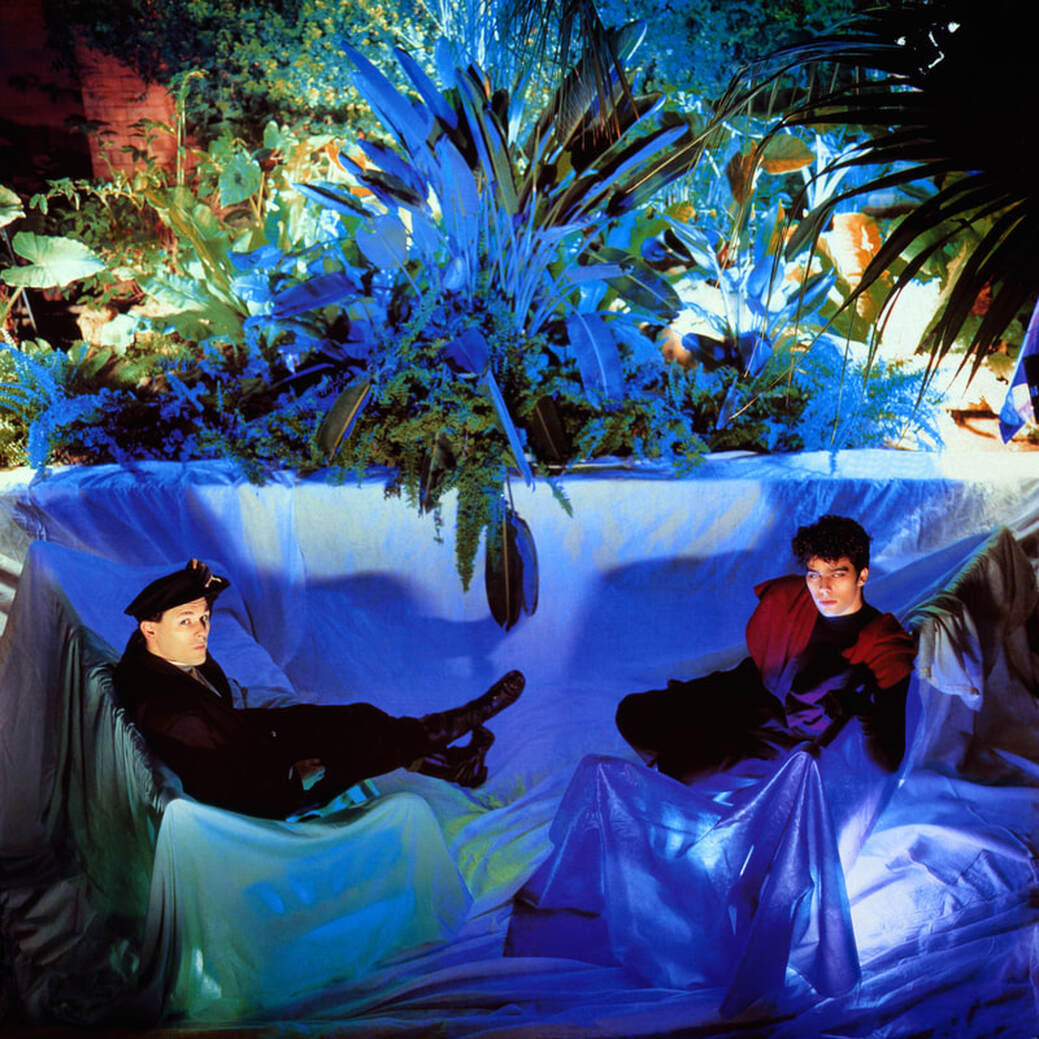
Billy MacKenzie and Alan Rankine, sitting nonchalantly amongst a riot of richly lit plants in an out-of-season summer house, the furniture covered in dust-sheets. Shot on the 11th February 1982, on EPR.120 transparency film. Using a Hasselblad with a 60mm lens. This digitised version was created in 2015 for inclusion in the National Portrait Gallery permanent collection.
Bryan Ferry - smoke in your hair
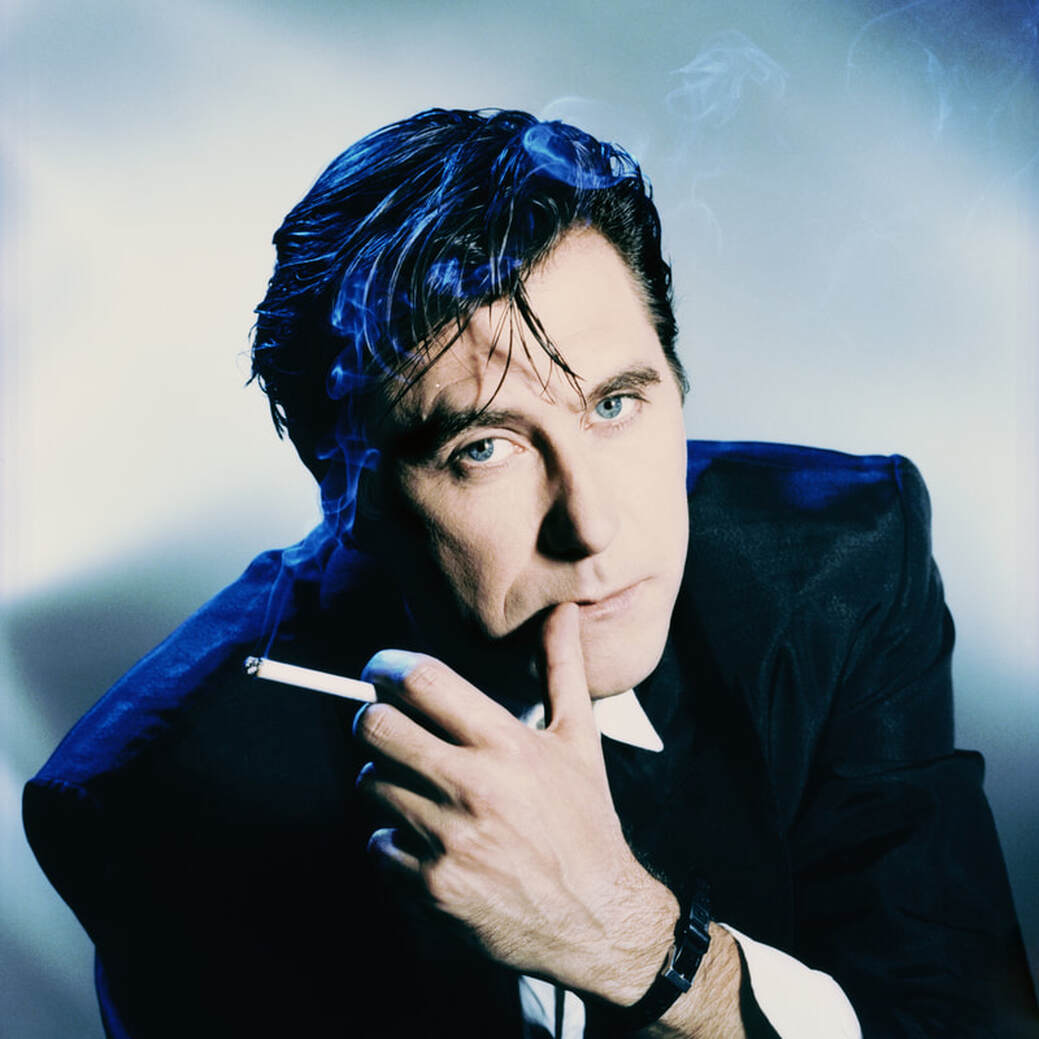
Bryan Ferry, smoking, a deep blue backlight picking out the smoke floating across his hair. 20th May 1985, in a Clerkenwell studio. The whole shoot was a very casual affair. Bryan arrived by himself with a little battered suitcase containing a rumpled jacket and a couple of shirts, which he then proceeded to iron while i was setting up the lights. Studio shoots were a far less populated affair back then, just Bryan and myself. Not even a makeup artist.
Shot on colour transparency film, on a Hasselblad. This digitised version, scanned from the original colour transparency, was made on the 7th April 2018.
lan Broudie - Cloud Cuckoo Land LP session
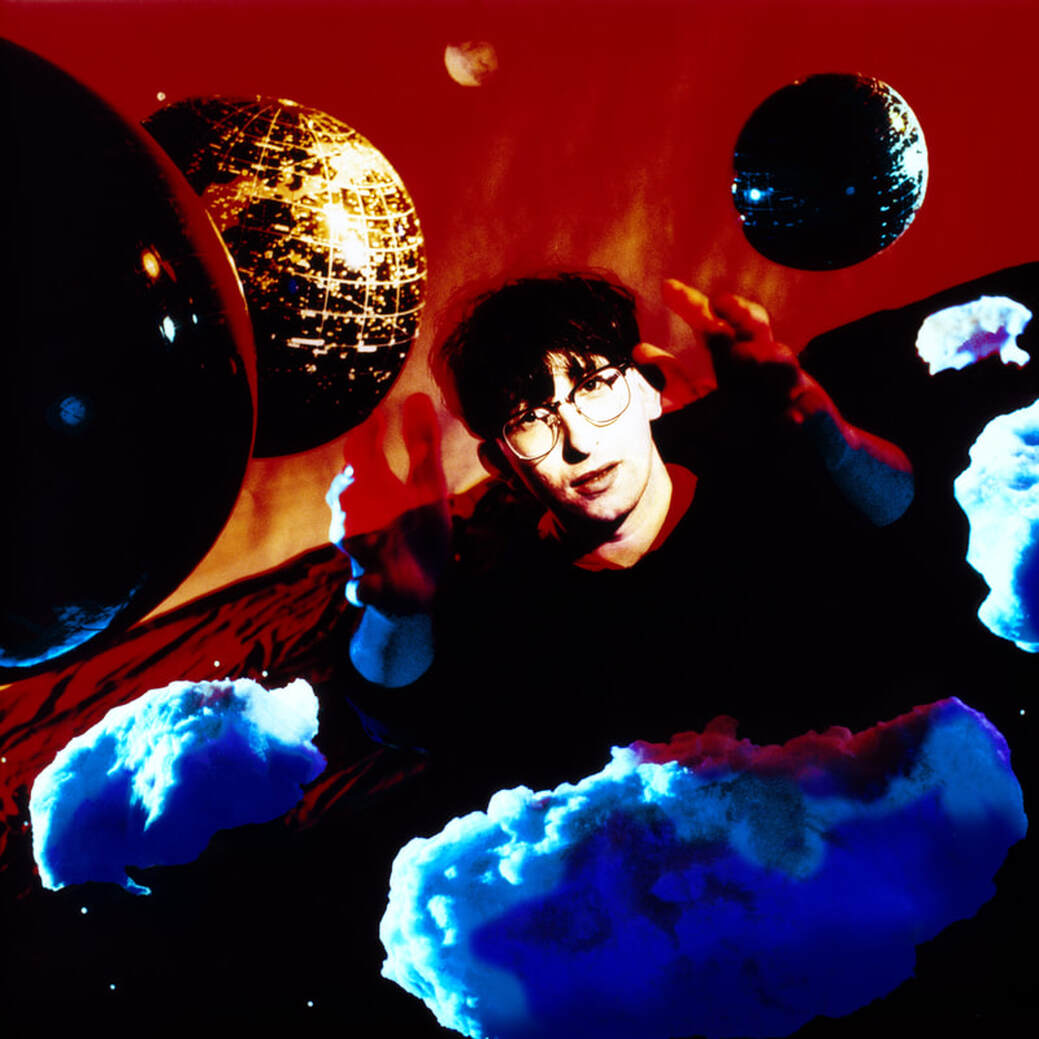
Ian Broudie reaching out from amongst planets and clouds. The set was a naive hand-made one, composed of cotton wool clouds supported on sticks and blown-up plastic globes hanging from the ceiling.
Shot on both EPR120 colour transparency and cross-processed 120 film. This digitised version was made from a scan of an original colour transparency, 19th April 2018.
The Cult - roses
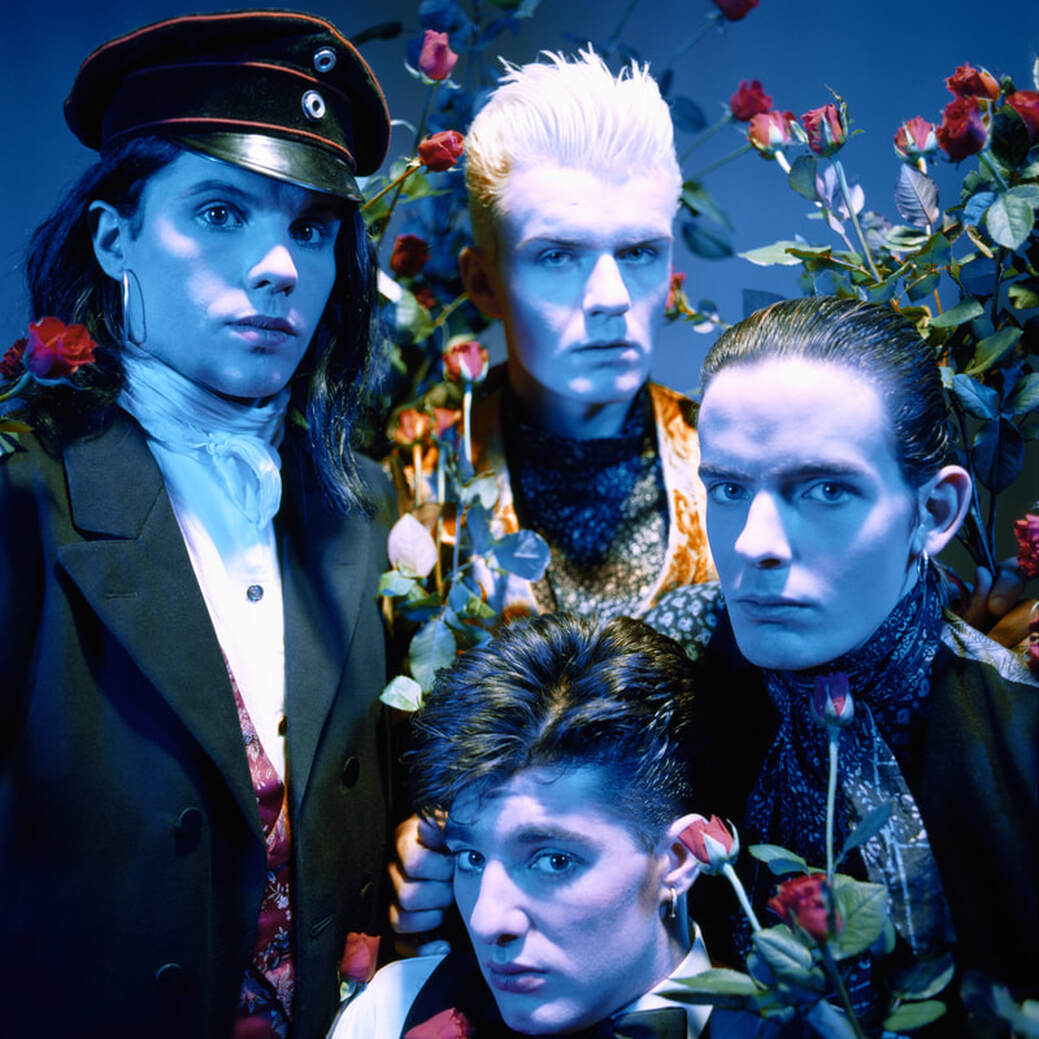
The band stand in a tight group up close to the lens, surrounded by roses and lit with strong opposing colours, creating a quirkily claustrophobic group portrait.
Shot, on 3rd January 1985, on EPR.120 film, using a Hasselblad with a 60mm lens. This digital version was made from a scan of the original colour transparency, on 6th April 2018.
share